This post may contain affiliate links. As an Amazon Associate I earn from qualifying purchases. Please read our disclosure policy.
If you want to make the Best Mashed Potatoes, look no further. This recipe will deliver a bowl of creamy, cloudy, and perfect mashed potatoes.
The ingredients are important for this potato recipe, but so is the equipment. I walk you through this tasty potato recipe step-by-step, so you can end up with a serving bowl of the most wonderful and simple mashed potato recipe.
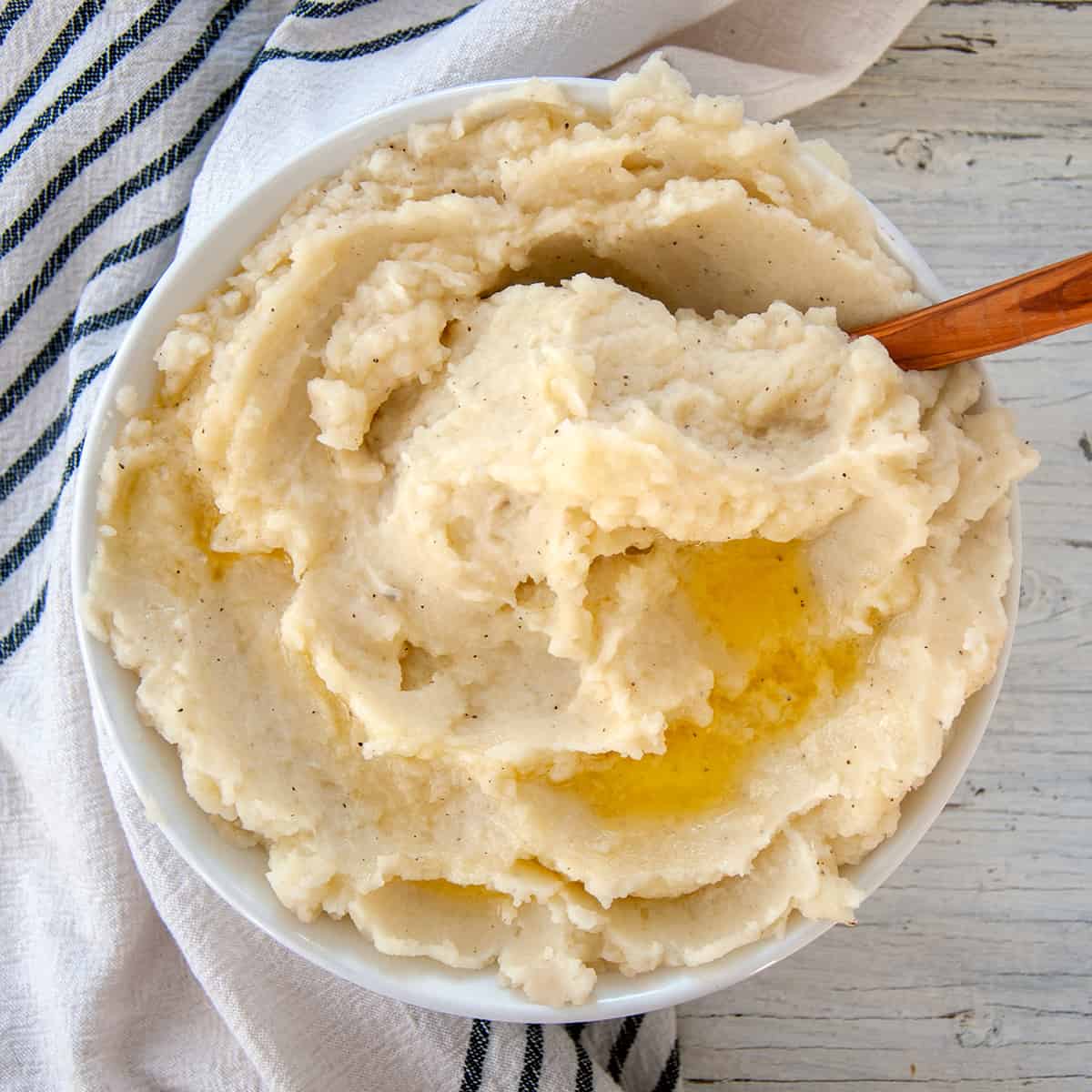
🧈 What makes this recipe special?
What is Christmas, Thanksgiving, or Easter without a big serving of mashed potatoes? Why not serve the best mashed potatoes you can? This is a basic mashed potato recipe that gives you a perfect side dish that everybody will love.
This has no lumps, is creamy as it gets, and ready to help make your holiday meal the best ever. Of course, sometimes a person might just want mashed potatoes for a regular dinner. This is easy and quick enough for that, too.
My goal for this is to get you the best, basic mashed potato recipe possible. Our ingredients, steps, and suggested equipment will help make a great dish of potatoes.
These potatoes will be a great side dish for our Sous Vide Prime Rib recipe, this Spicy Italian Meatloaf recipe, or a delicious Grilled Steak. No matter what you make, make sure to treat yourself.
🥔 Ingredients
The obvious one is potatoes. There isn’t much to this recipe, but there are a few other ingredients that pull this recipe together. Here is what you will need:
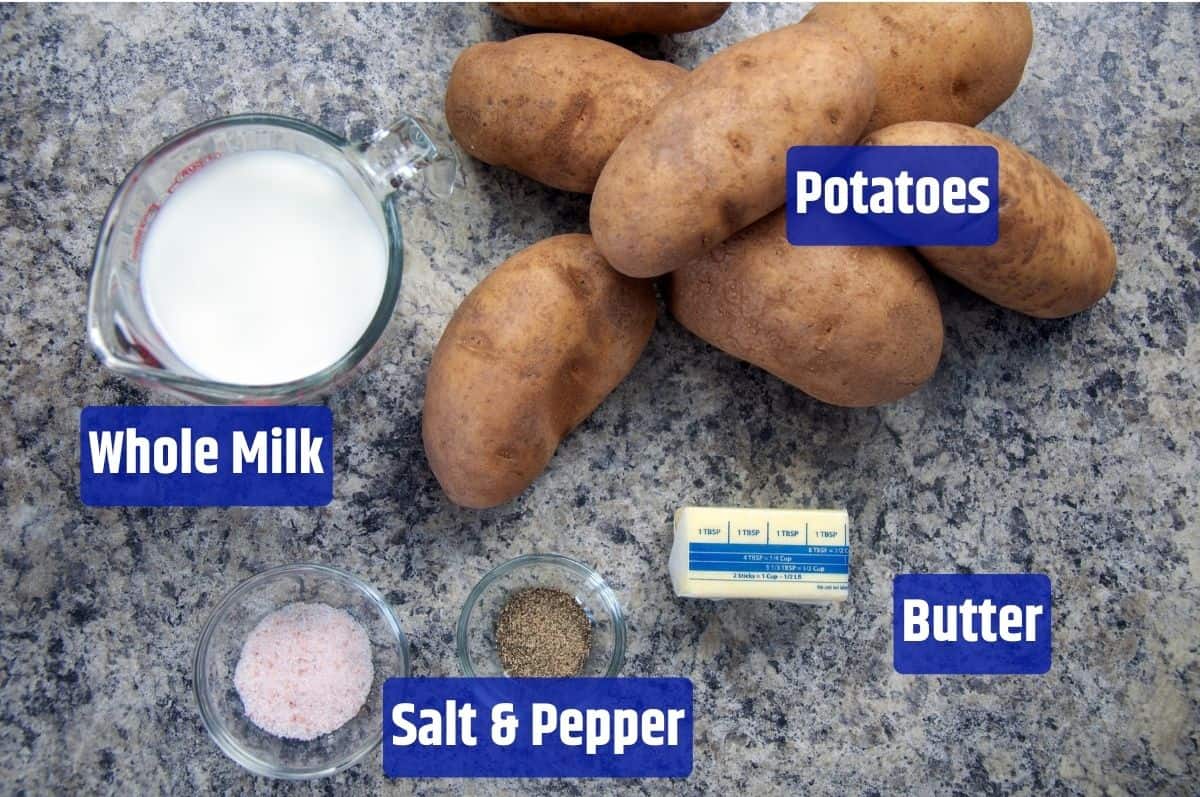
- Russet potatoes
- Whole milk
- Butter
- Salt & Black Pepper
See the recipe card for quantities.
Types of potatoes
I choose Russet potatoes, which are widely available and reasonably priced for mashed potatoes. Yukon gold potatoes are another kind of potato that works great for mashed potatoes.
Really, you can use any potato, but you are going to get different results. Some potatoes, like red potatoes, will make a waxier and less ideal product.
Russet really are the best potatoes for this, but sometimes I use Yukon.
Amount of potatoes
I estimate about ½ pound of potatoes for one serving. This is the weight AFTER the skins have been removed.
Dairy
I use whole milk, but you can really use anything from skim to whipping cream. This, however, will impact your end product.
The richer your dairy is, the richer your final product. Whole milk is perfect for this use.
🍲 Instructions
This is one of those recipes where the ingredients are few, but how you handle them makes a big difference in the outcome. Nothing is hard, but a few simple steps can ensure creamy mashed potatoes with no lumps.
An essential step to making great mashed potatoes is to bring the dairy to room temperature. Room-temperature milk and butter will help ensure you get hot potatoes.
If you use cold butter and milk, it will cool down your potatoes. Not only might the potatoes cool, but the butter may not completely melt.
Another essential step to making great mashed potatoes is rinsing and soaking your potatoes. The goal is to help wick away some of the starch that is on the outside of the potatoes.
Excess starch gives potatoes a waxy, plastic look and feel. This can be avoided by soaking uncooked potatoes and thoroughly rinsing them before adding to the boiling water.
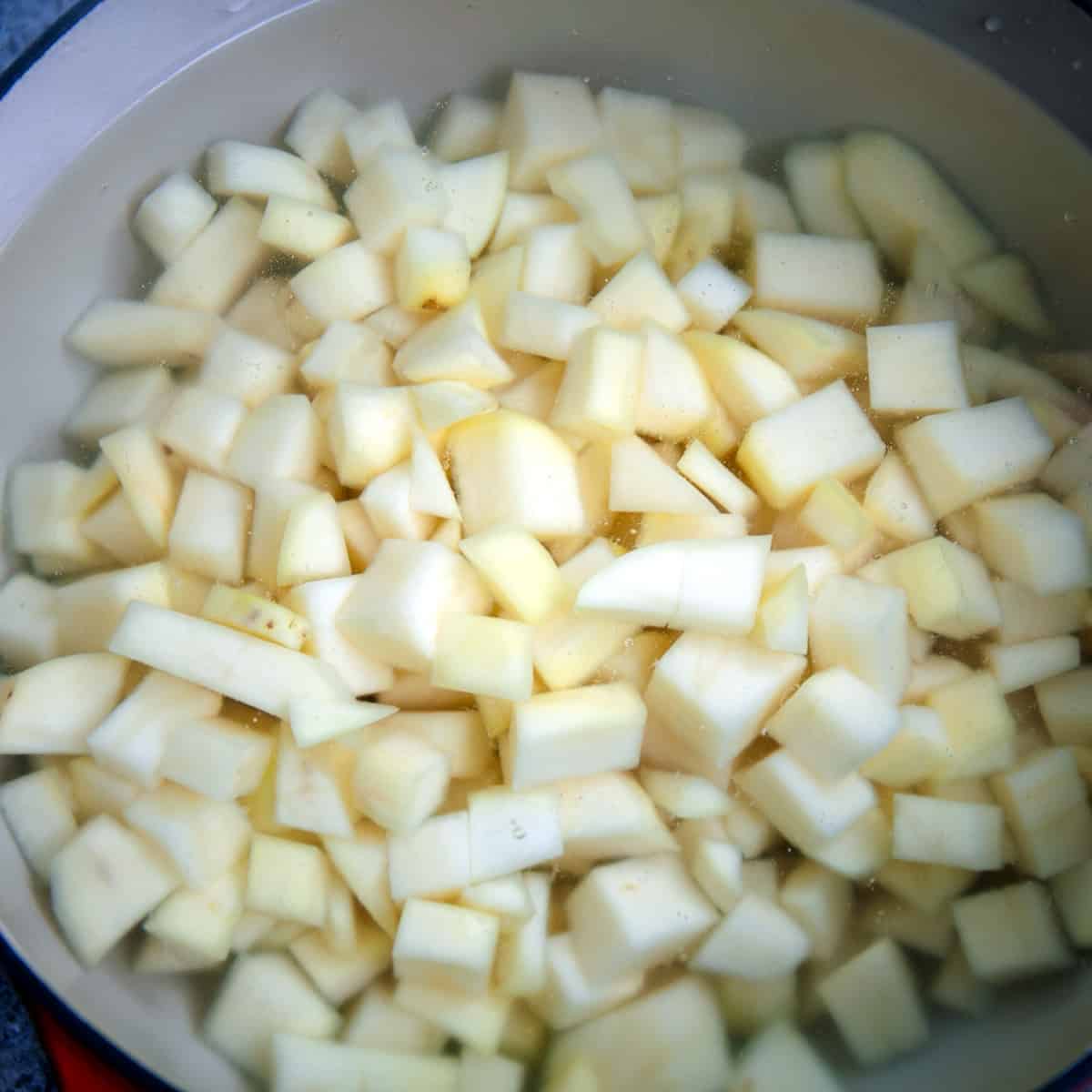
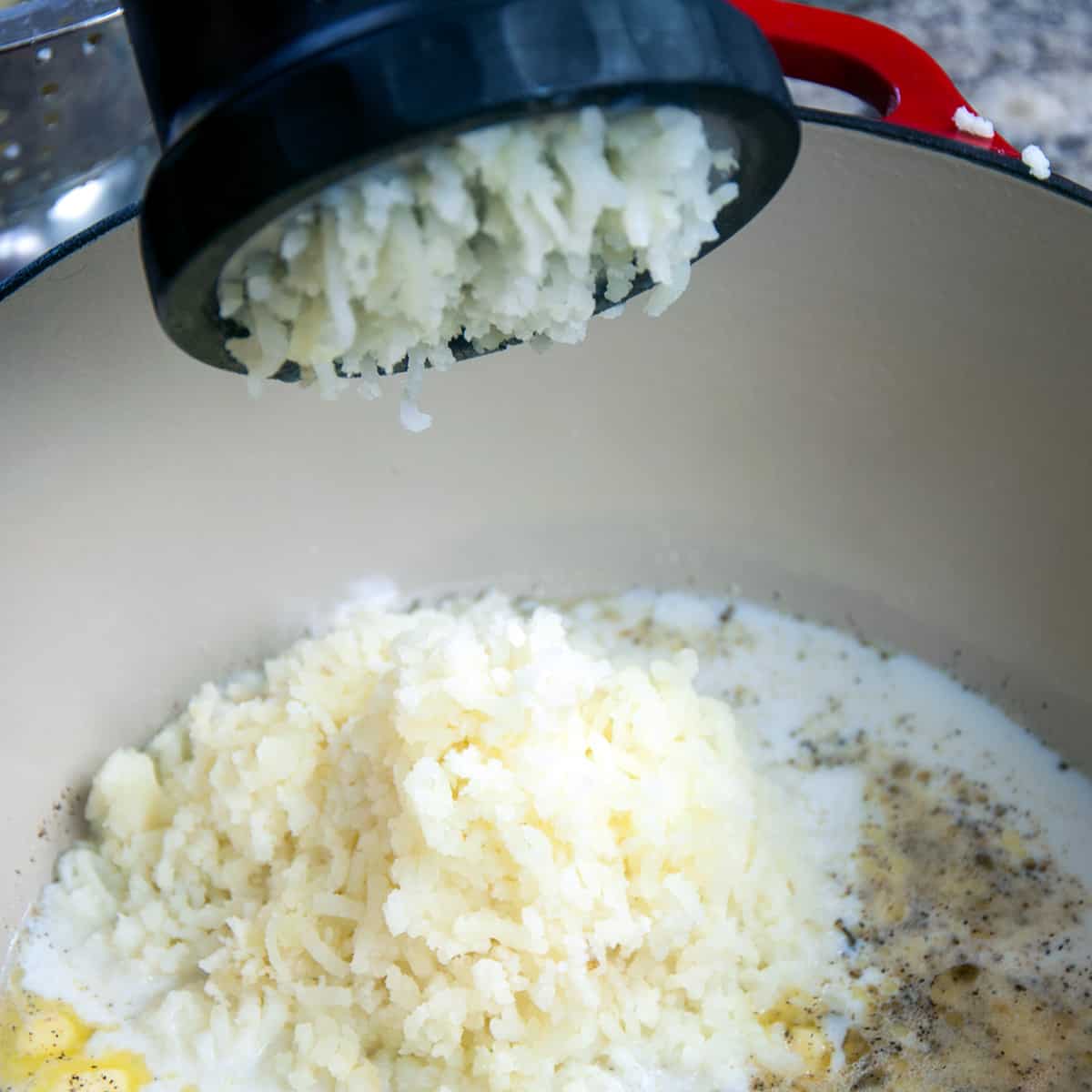
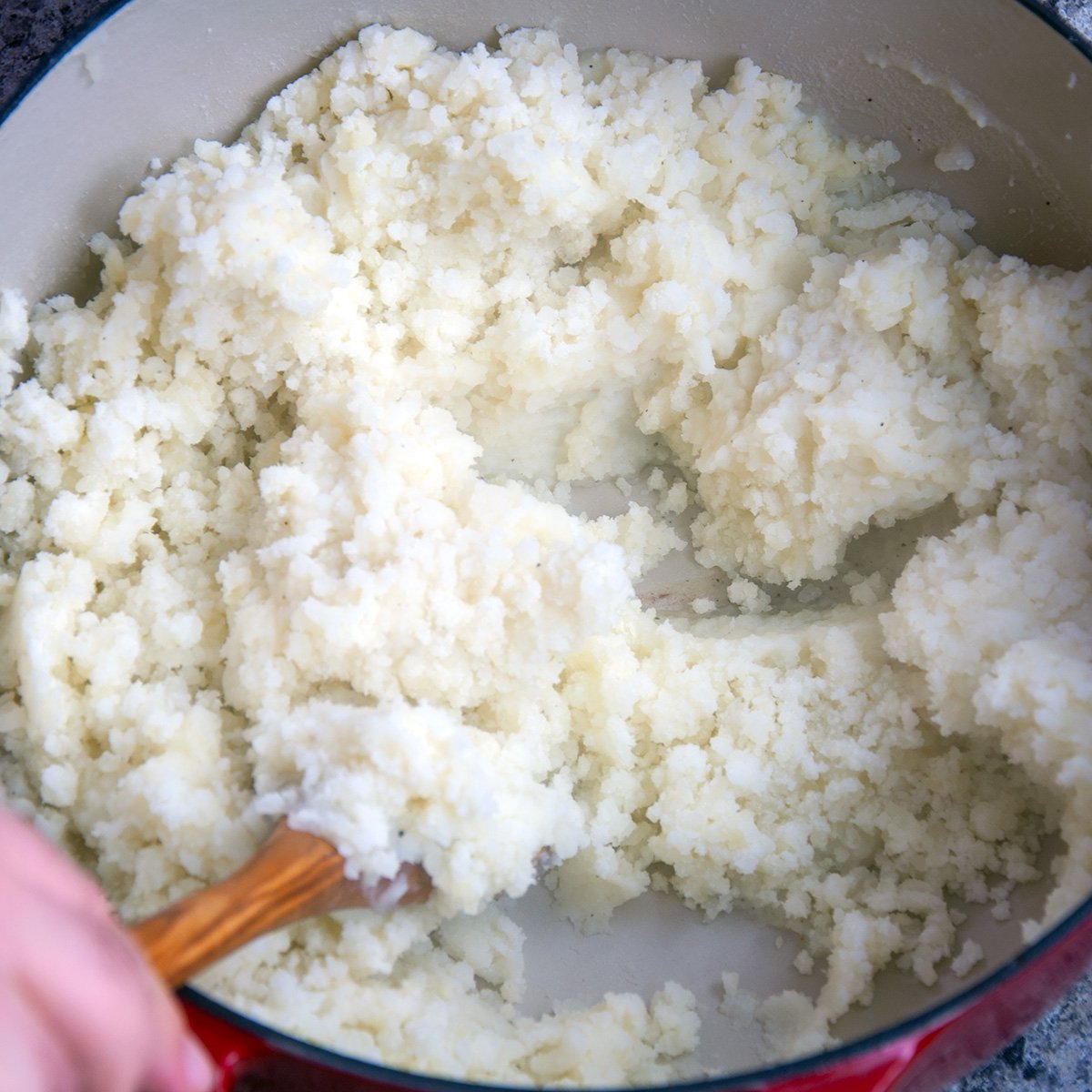
Finally, let’s talk lumps. Use a potato ricer or food mill to get a great mashed potato without any lumps. It is that easy.
While they are an extra piece of equipment to have around, they work great and making lumpless mashed potatoes. I also use mine when I make lefse, so I find a few uses.
By bringing dairy to room temperature, appropriately rinsing the correct type of potatoes, and using a potato ricer, you will end up with the best mashed potatoes with no lumps.
What NOT to do
Don’t use a hand blender or food processor to mash your potatoes. This will give you waxy, plastic-looking potatoes that have a glue consistency. If you don’t use the ricer, like I recommend, use a hand masher or other utensils you can mash potatoes with.
🤷 Substitutions and variations
There are a few ways that this can be changed up.
- Type of potato – I use russet potatoes, but Yukon also works well
- Milk – I use whole milk, but 2%, skim, or heavy cream can also be used with varying results. Whole milk is the best. You could even use sour cream.
- Skins – Do you like potato skins? This recipe can be made with the skins on, but *do not* use a potato ricer and use a hand masher instead. The skins will clog up the potato ricer and make it impossible to use.
- Lumpy potatoes – This recipe can be made with a bit of lump in it. Just don’t use a potato ricer and use a hand masher instead.
- Garlic – Want to add some garlic flavor to your potatoes? Toss in 4 or 5 peeled cloves of garlic into the water when you boil your potatos. They will soften up and go through the ricer. The garlic will mix right in.
📦 Short and long-term storage
The easiest way to keep potatoes warm is to put a cover on the dish. If you dont have a cover, a piece of tinfoil will do the trick
You could also put them into a slow cooker. Transfer the mashed potatoes to a slow cooker set to the “warm” or “low” setting. Stir occasionally to prevent them from sticking to the sides or drying out.
Mashed potatoes can be stored in the refrigerator for a few days or frozen for longer-term storage. To store mashed potatoes in the refrigerator, transfer them to an airtight container and refrigerate within two hours of cooking.
The mashed potatoes can be stored in the refrigerator for up to three to four days. When reheating, add a bit of extra milk or butter to restore the creaminess of the mashed potatoes.
To freeze mashed potatoes, transfer them to a freezer-safe container and freeze for up to 2-3 months. When reheating, thaw the mashed potatoes overnight in the refrigerator, then reheat on the stove or in the microwave with a bit of extra milk or butter to restore their creaminess.
Note that mashed potatoes may have a slightly different texture after being refrigerated or frozen and reheated. They may become a bit more dry or grainy, but they should still be safe to eat as long as they were stored properly and reheated to the appropriate temperature.
🎓 History Tidbit
Potatoes were first cultivated by the Inca civilization in what is now Peru.
The Spanish brought potatoes back to Europe in the 16th century, and they quickly became a popular crop throughout the continent. The first known recipe for mashed potatoes appeared in an English cookbook called Hannah Glasse’s The Art of Cookery in 1747. The recipe called for boiled potatoes that were mashed with butter and cream and then seasoned with salt and pepper.
Mashed potatoes became a staple of European cuisine in the 18th and 19th centuries, and they were brought to the United States by European immigrants in the 19th century. Mashed potatoes became a popular side dish in American cuisine, and they are now a ubiquitous part of the traditional American holiday meal, especially for Thanksgiving.
❓ FAQ
Mashed potatoes can be a healthier side dish when made with low-fat milk and butter, and seasoned with herbs and spices instead of salt. However, mashed potatoes can be high in calories and carbohydrates.
Plain mashed potatoes made from potatoes, butter, milk, and seasonings do not contain gluten.
Mashed potatoes can be frozen. To freeze, place the mashed potatoes in an airtight container or freezer bag and freeze for up to 2-3 months.
It is approximately ½ pound of raw potatoes for one serving.
📝 Tips and tricks
- Use Russet Potatoes.
- Make sure you rinse and soak the potatoes.
- Do NOT use a hand mixer or food processor to mash potatoes.
- It is important to use room temperature milk and butter. If you are in a hurry or don’t have time, bring your milk and butter to room temperature by heating in your microwave using a low power setting. I use power level two (out of ten) on my microwave for about 2-5 minutes to bring milk or butter to room temperature.
- Add more salt and pepper if desired.
- Like garlic? Add some garlic.
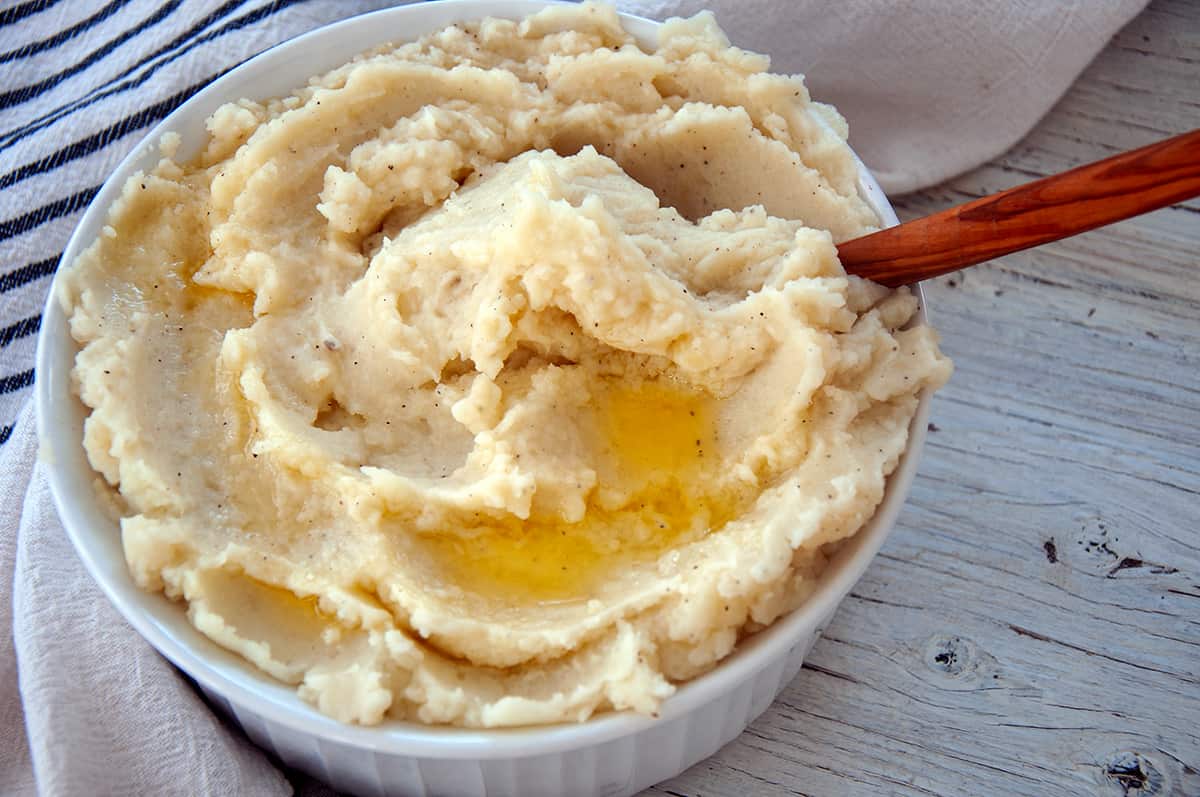
🛠 Products used in this recipe
😋 Did you make this recipe?
That is awesome, and thank you so much for giving our Best Mashed Potatoes recipe a try. If you could leave a rating in the comment area below, it would be greatly appreciated. This lets me know how I am doing and also helps others decide if they want to make this recipe. Most of all, thanks for visiting Ramshackle Pantry.
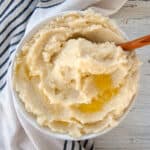
Best Mashed Potatoes with NO LUMPS
- Prep Time: 10 minutes
- Cook Time: 25 minutes
- Total Time: 35 minutes
- Yield: 5 servings
- Category: Side Dish
- Method: Stovetop
- Cuisine: American
Description
Get ready to indulge in the most heavenly, creamy, and utterly delicious mashed potatoes you’ve ever tasted! Say goodbye to lumpy mashed potatoes with this easy-to-follow recipe that will leave your taste buds singing with joy. Made with perfectly cooked russet potatoes, velvety whole milk, and butter, these mashed potatoes will have you reaching for seconds (or thirds!).
Ingredients
- 2 1/2 pounds rinsed and peeled russet potatoes, cut into approximately 1-inch cubes
- 1 cup whole milk, room temperature
- 4 tablespoons salted butter, room temperature chopped into 1” pats
- 1 teaspoons salt or to taste
- 1/2 teaspoon pepper or to taste
Instructions
- Rinse peeled and cut potato under cold water – allow to soak in water while water is heating.
- Heat water to a boil in a large pot
- Drain potatoes and add potatoes to boiing water.
- Cook until tender (approximately 10-15 minutes)
- Remove and strain in a colander.
- In a different container original pot where potatoes were boiled, add room-temperature milk, butter, salt and pepper.
- Rice potatoes into dish and gently fold with spatula or wooden spoon to mix all ingredients and melt butter. Alternatively, use potato masher.
- Serve
Notes
- Use Russet Potatoes.
- Make sure you rinse and soak the potatoes.
- Do NOT use a hand mixer or food processor to mash potatoes.
- It is important to use room temperature milk and butter. If you are in a hurry or don’t have time, bring your milk and butter to room temperature by heating in your microwave using a low power setting. I use power level two (out of ten) on my microwave for about 2-5 minutes to bring milk or butter to room temperature.
- Add more salt and pepper if desired.
- Like garlic? Add some garlic.







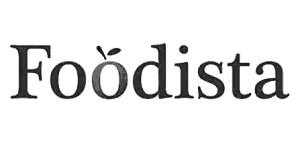


A fine and tasty recipe. As promised, no lumps, but you do need a piece of equipment.